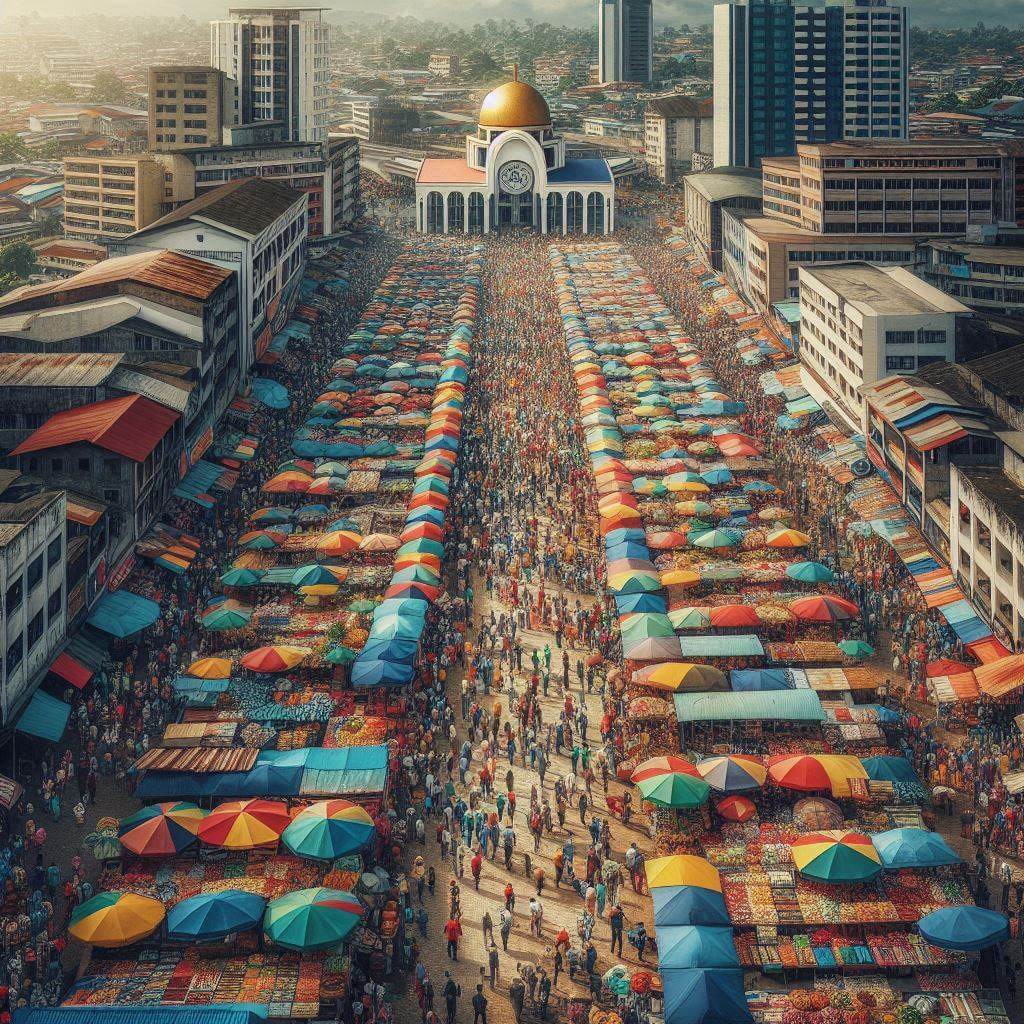The flag of Equatorial Guinea consists of three horizontal stripes of green, white, and red, with a blue triangle at the hoist. The national coat of arms is centered in the white stripe, symbolizing the country's identity and sovereignty.
Equatorial Guinea information
| National Flag Day | — |
| Sovereign state | Yes |
| Official name | Republic of Equatorial Guinea |
| Capital | Malabo |
| Population | 1,355,986 |
| Area | 28,051 km² |
| Currency | Equatorial Guinean ekwele (EG) |
| Language | Spanish, French, Portuguese |
| Continent | Africa |
| Region | Central Africa |
| Subregion | Middle Africa |
| Borders | Cameroon, Gabon |
| Timezone | West Africa Time (WAT) UTC+1 |
| Calling code | +240 |
| Top-level domain | .gq |
History of the Equatorial Guinean Flag
 The flag was adopted on October 12, 1968, coinciding with Equatorial Guinea's independence from Spain. It represents a significant moment in the nation's history, marking the end of colonial rule and the beginning of self-governance. The flag's design draws inspiration from pan-African colors and symbolism, reflecting the country's African heritage and its place within the continent.
The flag was adopted on October 12, 1968, coinciding with Equatorial Guinea's independence from Spain. It represents a significant moment in the nation's history, marking the end of colonial rule and the beginning of self-governance. The flag's design draws inspiration from pan-African colors and symbolism, reflecting the country's African heritage and its place within the continent.
Symbolism and Design of the Equatorial Guinean Flag
Each element of the flag holds deep meaning for the people of Equatorial Guinea. The green stripe symbolizes the country's lush forests and abundant natural resources, highlighting the importance of agriculture and environmental preservation. The white stripe represents peace, unity, and harmony among the diverse ethnic groups within the nation. The red stripe signifies the blood shed during the struggle for independence, honoring the sacrifices made for freedom. The blue triangle at the hoist symbolizes the Atlantic Ocean and the Gulf of Guinea, emphasizing the country's maritime identity and resources.
Usage and Significance of the Equatorial Guinean Flag
 The flag serves as a powerful symbol of national identity and pride. It is prominently displayed during official state functions, national holidays, and international events. The flag flies on government buildings, schools, and public spaces, reminding citizens of their shared history and collective aspirations. It also represents Equatorial Guinea in diplomatic settings and international organizations, showcasing the country's sovereignty on the global stage.
The flag serves as a powerful symbol of national identity and pride. It is prominently displayed during official state functions, national holidays, and international events. The flag flies on government buildings, schools, and public spaces, reminding citizens of their shared history and collective aspirations. It also represents Equatorial Guinea in diplomatic settings and international organizations, showcasing the country's sovereignty on the global stage.
Interesting Facts About the Equatorial Guinean Flag
- The national coat of arms featured on the flag includes a silk-cotton tree, symbolizing the country's rich flora and biodiversity. Six stars represent the mainland and five inhabited islands of Equatorial Guinea, emphasizing unity and territorial integrity. The national motto "Unidad, Paz, Justicia" (Unity, Peace, Justice) underscores the country's core values and aspirations.
- Equatorial Guinea is the only Spanish-speaking country in Africa, a unique linguistic heritage reflected in its national symbols and cultural identity. This linguistic distinction sets it apart from its neighboring countries and contributes to its diverse cultural landscape.
- The flag's design underwent minor modifications in 1973 and 1979 to adjust the coat of arms and alignment of stripes. These changes were made to enhance the flag's visual appeal and ensure its accurate representation of the nation's values and identity.
- The blue triangle on the flag is relatively uncommon among African national flags, making Equatorial Guinea's flag distinctive and easily recognizable in international settings.